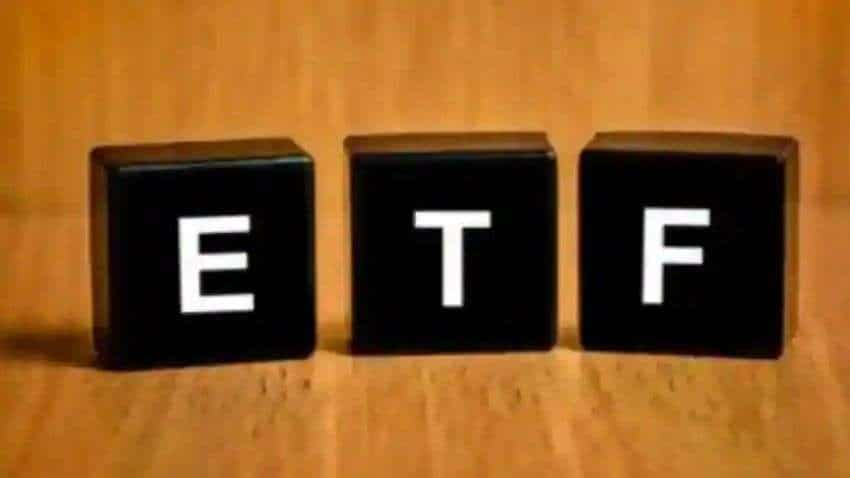NSE Celebrates 20 years of ETF listing; India’s largest exchange calls feat a “monumental beginning”
Exchange Traded Funds completed two decades of listing on the NSE, the exchange has informed via a tweet on its official twitter handle.

Exchange Traded Funds completed two decades of listing on the NSE, the exchange has informed via a tweet on its official twitter handle. The journey in India began with Nippon India Mutual Fund on the on the Nifty50 index, the tweet further said. The ETF was listed on NSE on January 8, 2002 and day one witnessed trading of Rs 1.30 crore on NSE, it added.
See Zee Business Live TV Streaming Below:
"A monumental beginning indeed! Have you invested in ETFs? Comment below and let us know," the tweet from the official Twitter handle of NSE said.
A monumental beginning indeed!
Have you invested in ETFs? Comment below and let us know. #20yearsOfETF #NSEIndia #ETF #ExchangeTradedFunds #StockMarket #Trading #Nifty #Nifty50 pic.twitter.com/vLfJaiXIee— NSEIndia (@NSEIndia) January 9, 2022
The ETFs are baskets of securities (Indices) that are traded, like individual stocks, on an exchange, as per the information provided by the NSE. Unlike regular open-end mutual funds, ETFs can be bought and sold throughout the trading day like any stock. ETFs have lower cost of transactions and annual changes compared to index funds. It can be noted that ETFs are considered a safer product for risk averse and first-time investors who want market linked returns, as per NSE.
The ways in which the application of ETFs can be beneficial for the investors are as follows:
1) Efficient trading - It must be noted that the ETFs provide the investors a convenient way to gain market exposure like an index that trades like a stock.
2) Equitising cash - The investors with idle cash in their portfolios may want to invest in a product tied to a market benchmark like an index as a temporary investment before deciding which stocks to buy or waiting for the right price.
3) Managing cash flows - Investment managers who see regular inflows and outflows may use ETFs because of their liquidity and their ability to represent the market
4) Diversifying exposure - Investing in shares tied to an index or basket of stocks provide diversified exposure and reduces stock specific risk
5) Filing gaps - ETFs tied to a sector or industry may be used to gain exposure to new and important sectors. Such strategies may also be used to reduce an overweight or increase in underweight sector.
6) Shorting or hedging - ETFs may be sold short against long stock holdings as a hedge against a decline in the market or specific sector
In case of any doubts and queries, the interested investors can login to the official website of NSE at nseindia.com.
Get Latest Business News, Stock Market Updates and Videos; Check your tax outgo through Income Tax Calculator and save money through our Personal Finance coverage. Check Business Breaking News Live on Zee Business Twitter and Facebook. Subscribe on YouTube.
RECOMMENDED STORIES

EPFO Pension Schemes: Early pension, retirement pension, nominee pension and 4 other pension schemes that every private sector employee should know

Gratuity Calculator: Rs 38,000 as last-drawn basic salary, 5 years and 5 months of service; what will be gratuity amount?

SBI 5-Year FD vs MIS: Which can offer higher returns on a Rs 2,00,000 investment over 5 years? See calculations

Senior Citizen Latest FD Rates: Know what major banks like SBI, PNB, Canara Bank, HDFC Bank, ICICI Bank are providing on fixed deposits
07:43 PM IST












 Despite decline, FPIs ownership in NSE-listed stocks still stands at 36.3%
Despite decline, FPIs ownership in NSE-listed stocks still stands at 36.3% No fundamental challenges to India's growth story despite FPI selling, says NSE Chief Business Officer
No fundamental challenges to India's growth story despite FPI selling, says NSE Chief Business Officer National Stock Exchange of India NSE celebrates milestone as total client accounts cross 200 million
National Stock Exchange of India NSE celebrates milestone as total client accounts cross 200 million NSE increases lot sizes for F&O: Key updates on SEBI regulation
NSE increases lot sizes for F&O: Key updates on SEBI regulation Sebi urges investors to deal with only registered persons & entities
Sebi urges investors to deal with only registered persons & entities